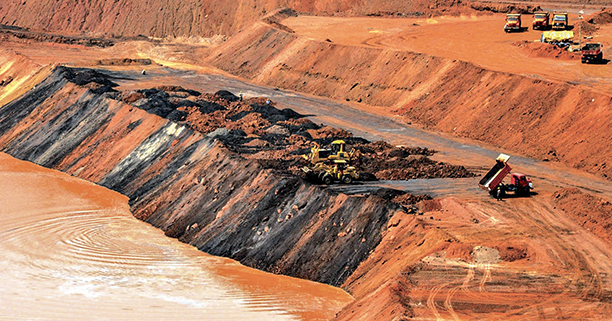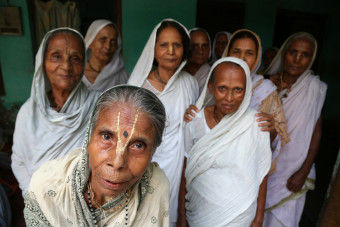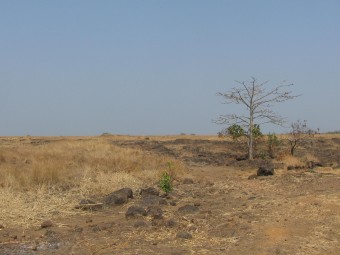(to be or not to be? that is the question)
Before attempting to answer the Big Question of the day – when will mining restart in Goa? – it’s worth remembering this simple fact: the heyday of Goan iron ore is now behind us.
A shrinking market, declining prices—by as much as half since before the ban—and falling demand brackets the dormant Goan mining industry in a shroud of external uncertainty.
The lion’s share of our state’s extracted iron ore had been snapped up by the ore-guzzling Chinese construction juggernaut. China, faced with slower growth, is no longer building on a war-footing, and demand for Goa’s specific extract, 58 grade ore, has shrunk to a fraction of what it was in 2009. The price has tumbled from US$ 100 per dry metric tonnes (DMT) in 2009 to $55 per DMT at present.
To recapture what is left of this dwindling demand, miners will need to approach their erstwhile patrons with ore in hand, from an industry that is fully operational, and capable of sustained delivery.
And herein lies the problem. While officials are promising a relatively quick resumption of the industry, it doesn’t appear likely any time within the next year. With the government all but ruling out an open auction for mining leases (as demanded by activists and much of the public), the alternative – letting the same old players resume their digging – is fraught with legal and logistical obstacles.
“Handing the leases right back to the stakeholders would attract legal objection from many quarters,” noted environmentalist Abhijit Prabhudesai told Goa Streets. “This is in fact a sure-fire way of delaying the restart.”
Don’t expect a quick resumption under any circumstances, he says, adding that the government’s actions so far seem only to be guaranteeing a continued impasse.
“Any logical moves toward a genuine path to starting mining would first involve studies on the cumulative impact of mining that has been undertaken so far. When we take out ore, we lose water, soil. There are a lot of issues that need to be addressed before mining can be restarted, and no steps have been taken towards addressing these. What would be the ideal cap for the amount of ore we may extract? Perhaps we have already exceeded that cap, no one knows because no studies have been conducted,” said Prabhudesai.
Before it was banned by the Supreme Court nearly two years ago, mining was Goa’s largest industry, employing some 80,000 people both directly and indirectly and fetching annual revenues of Rs 11,000 crore. It was also responsible for some of the worst corruption and environmental degradation ever seen in Goa.
Chief Minister Manohar Parrikar of the ruling BJP Party, keen to reassure mining interests that things are indeed moving and getting back on track, projects a revenue gain of Rs. 3,000 crore annually for the government, from royalties, once the industry is back in business. On October 1, while speaking to the press, he assured, “Signing of mining leases will begin from October 15. Bewteen fifteen to twenty leases will receive permission in the first phase.”

Since September 2012 however, when mining operations were shut down after an irate Supreme Court ruling forced the government’s hand by upholding directives in the forthright, detailed Shah Commission report, the resumption of mining has been a largely stop-and-stop affair. The only hark-back to trading days has been e-auctions of ore extracted before the ban, and lying stored in ports and harbours across the state.
Mining, an industry largely ignored by the public that wasn’t invested in it or working for it, was brought to the forefront of public attention after the abrupt stoppage. Overnight, environmental activists like Claude Alvares and Ramesh Gawas turned into heroes or villains, depending on which end of the ban they were viewed from.
Buoyed by the emphatic ruling and stung by the sheer scope of irregularities outlined in the Shah Commission report, the public of Goa for the first time began to view the ore itself for the local resource it is, and question if it did not in fact belong to the state as a whole. The mind-boggling figure of 35,000 crores which the Shah Commission report estimated was owed by the lease-holders captivated public imagination.
The idea that the average citizen should benefit from the sale of a local resource took shape, and a long-term “sustainable mining” policy, a demand of the environmental NGO Goa Foundation, became buzz words, with widespread discussions on an acceptable yearly cap or limit on extraction raging concomitantly.

Between 2004 and 2012, 282 million tonnes of ore were exported from Goa, valued at Rs 87,748 crore. Of this, the mining companies kept most for themselves, while the central government took in around 20 percent in export duties. A paltry 4 percent went to the state exchequer.
The absolute independence of the mining operators has been irrevocably shattered. When mining restarts, whenever it does, it will invite tremendous, constant, public and legal scrutiny.
When will mining restart?
The government of Goa has earlier this month released its new mining policy that leaves more questions unanswered than answered.
To the specific ire of mining stakeholders, no dates have been set. The other pivotal question, and possibly the root cause of all delays in the first place, is who the eventual leases will be awarded to.
The government for its part showed some of its cards early, only months into the ban, as early as February 2013, after citing an urgent cash crisis resulting from the stoppage of mining royalties, a revenue loss of about 640 crores at the time, by borrowing from the miners in the form of stamp duties.
A revised Stamp Duty Act provided that leaseholders would have to pay a 20-year advance duty on projected royalties, with a 15% duty applying. The government estimated a cash injection of between 161 and 240 crores, to help tide over its immediate financial crunch.
The action was of course seen as a course-setting move, with the government, in all evidence, rejecting any change of method in sanctioning the leases.
A year and half later, predictably, the Chief Minister has indicated that the stakeholders who did pay the stamp duties should be rewarded for their “loyalty”.
Undeterred, Goa Foundation has challenged the disbursement of leases on the basis of payment of stamp duty, a matter that will be heard in the Supreme Court on October 13, 2014.
Auctioning of the mining leases, a demand among mining activists and growingly among the public, to ensure that the state earns more robust royalties, has been definitively rejected by Parrikar.
Any auctioning of leases was an option with a poor chance from the start, when the massive contributions to pre-election party coffers are considered. Mining stakeholders like SESA and Vedanta invested heavily, in the hundreds of crores, hedging their bets by contributing to both major contenders at the time, the Goa Congress and the BJP.
As per the Mines and Mineral Regulation and Development Act of 1957, the choice of which way to go does rest categorically with the local government, within regulations of the Act.
The recently released mining policy does a delicate tango on the subject of the awarding of leases, stipulating that only leaseholders with minor past violations will be afforded renewal.
As per the government, around 20 leases with “minor violations” will be renewed without penalties, another 30 also get the green signal, but will attract penalties. Other leases, which have “substantial violations” marked against them, will see their applications summarily rejected. Since the violations and their degrees have not been spelt out, nor the leaseholders falling into the said categories identified, the public has again been left in the dark about the process ahead.
Two years after the ban, the resumption of mining appears as distant as ever. Caught in a veritable Catch 22, this delay may just, against all evidence and declarations, suit the incumbent government very well. BJP swept to victory in no small way due to its vituperative stand against mining illegalities before the poll.
Sandwiched between varying interests starting with the leaseholders, the various mining-dependents including truck and barge owners, the mining-employed, environmental and mining activists, his voting public and ominously, the Supreme Court, which has paid close attention to all developments on the front, the Chief Minister walks a very tight rope indeed, stretching himself thin to assure all parties that he has their interests at the forefront of his policies and action.
Mining dependents who lost their jobs after the ban, in the first few months agitated strenuously, warning of dire political consequences if mining was not resumed with immediate effect. Conspiracy theories abounded, with the Chief Minister attracting much of the anger, even being accused of casteism. Many mining employed, particularly in the southern regions of Cuncolim-Quepem come from castes other than the Chief Minister’s own.
Two years later the tempers have somewhat cooled, and discussions have become more civil. While debates among the Goan public have also dialed down in the intensity of ensuing opinions, the public is still watchful.
Whether buying time will pay off, when the mining eventually restarts, will no doubt show in how much of their way the principal stakeholders – including SESA, Vedanta, Salgaonkar Mines and Timblo Mines – manage to have.
At present, it would appear that Goa is headed back to exactly the same players and scenario as before the ban, on a more regulated platform. That is, unless, the Goa Foundation can pull of another coup in court.





Excellent article Aparna you must have done lot of research to come up with such an excellent article.